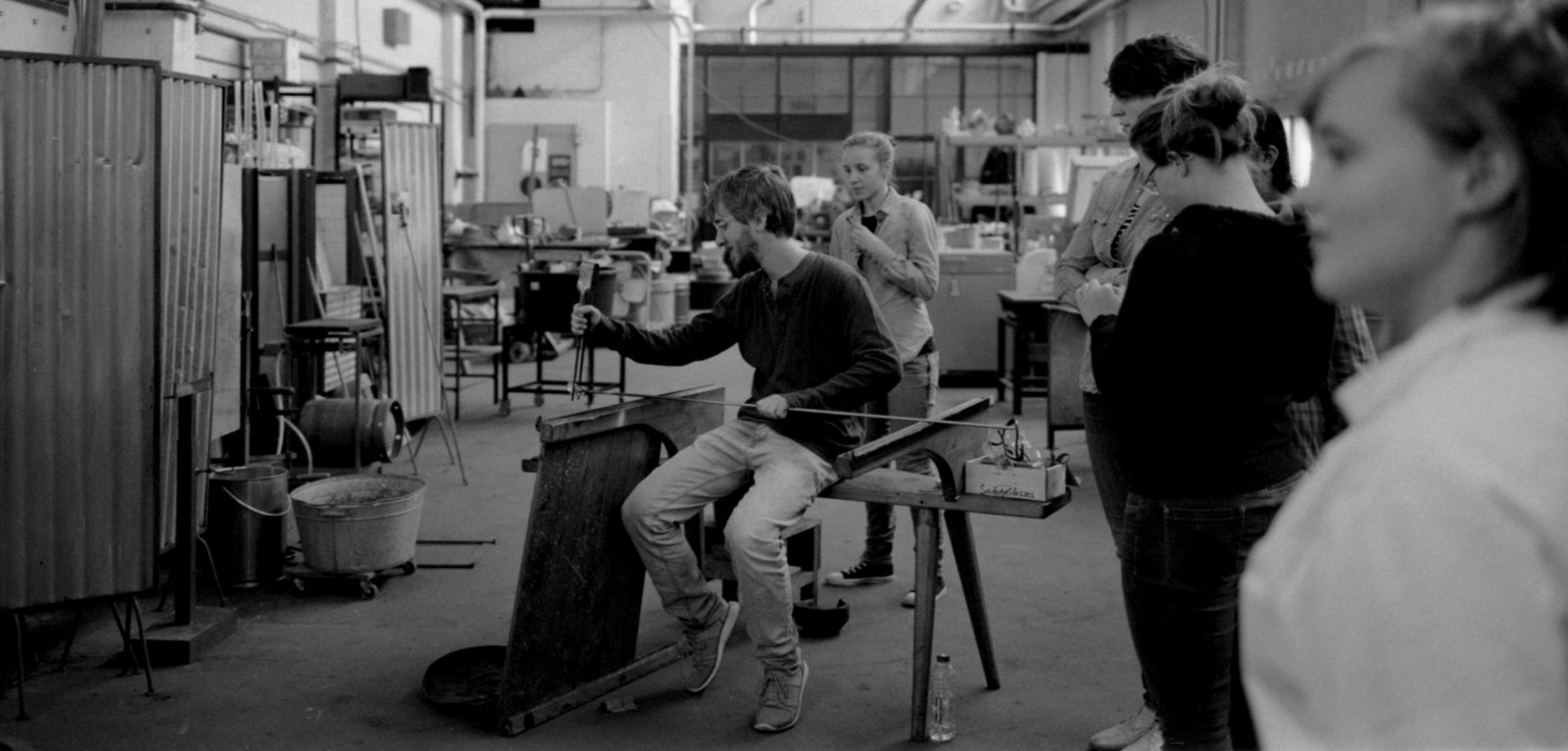Blogs
Re-enactment in Teaching Art History (Part 1)
By Sven Dupré
In the past year, the ARTECHNE team has become increasingly involved in the integration of enactment and performance in research and teaching; it has been a real avalanche of events – the development of new courses, academic workshops, and summer schools – going at a pace which is sometimes hard to keep up with. In the spirit of the season, let us take a moment to stand still and reflect on performative methods in the humanities, and art history in particular, and on how enactment plays an important role in processes of learning and knowledge production. What are the opportunities of cooperation with makers for researchers and teachers in art history and, more broadly, the humanities? I also see this as a case of fruitful integration of arts-based approaches in academic research and in teaching art history and the humanities in the university.
We find the origins of the application of performative method in the historical disciplines in the educational context. For example, experimental history of science, as practiced by Otto Sibum in the 1990s, emerged out of the reform of physics laboratory classes, replacing modern experimental set-ups with historical replicas of scientific instruments, at the University of Oldenburg.[1] Today, historians of science Peter Heering and Hasok Chang continue to promote the use of re-enactment of historical experiments as an important element in contemporary science teaching.[2] Art historians have been more reluctant to adopt performative methods of teaching; but times are ripe for change. At Utrecht University, we have initiated a new introductory, first year art history course “From Paper to Plastics: Materials & Techniques” which is supported by practicals of drawing, etching, sand-casting, painting and glassblowing, including visits to workshops and makers, such as the Vrij Glas Foundation workshop established by the heirs of Sybren Valkema, one of the European proponents of the mid-20th century Studio Glass Movement, in Zaandam.
Kunstgeschiedenis – van papier tot plastic, materialen en technieken
While art history is a relative latecomer to the adoption of hands-on practice in teaching, the discipline can build upon sustained methodological reflection which considers re-enactment as part of the toolbox of art history since Erwin Panofsky’s ‘Art History as a Humanistic Discipline’ (1938).[3] After Panofsky, Michael Baxandall is the most outspoken art historian on the issue of re-enactment, and given his profile as author of Limewood Sculptors of Renaissance Germany, and his concerns with materials and narratives of making his work is also closer to the use of performative methods. Although Baxandall does not perform, he makes room for the application of re-enactment as both a bodily and mental act in art history. Baxandall’s idea of re-enactment is as a method which is self-aware of its distance from the art historical past, precisely because he thinks of re-enactment as material, bodily, and sensuous.
Let me push back an oft-repeated objection, or rather misunderstanding, about the usefulness of re-enactment in the historical disciplines. The aim of re-enactment is not finding out ‘what really happened’; the object is not a historical account of the past ‘as it really was’. Practitioners of performative methods show self-awareness of the distance of the re-enactment from the historical past.[4] In various degrees, all historical disciplines in which performative methods are applied accept that one cannot walk in the streets of the past, and that the usefulness and success of the performative method depend upon asking the right historical questions and designing the re-enactment accordingly. In this sense, since the past can never be brought back to life, it might be better to speak of ‘enactment’ instead of ‘re-enactment’. However, I am still in favor of using the term ‘re-enactment’, because otherwise we might lose sight of the fact that the past itself, when it originally happened, is ‘re-enacted’. As Vanessa Agnew has argued: “Rather than eclipsing the past with its own theatricality, reenactment ought to make visible the ways in which events were imbued with meanings”.[5]
The adoption of methods of enactment, or what one may call ‘the apprenticeship model of learning in art history’, stands at the recent end of a longer history of a fundamental change of university education which has begun in the early modern period. I cannot tell this history here, but if knowledge production is something of the hand and the mind, and if teaching and learning are community based practices, the re-enactment of historical processes of making is not just a fun but extracurricular activity, it is nothing less but essential to teaching students of art history.
[1] Heinz Otto Sibum, “Experimental history of science,” Museums of modern science, ed. Svante Lindqvist (Canton, MA: Science History Publications, 2000), 77-86; Otto Sibum, “Reworking the Mechanical Value of Heat: Instruments of Precision and Gestures of Accuracy in Early Victorian England’. Studies in History and Philosophy of Science Part A 26 (1995): 73–106.
[2] Hasok Chang, “How Historical Experiments Can Improve Scientific Knowledge and Science Education: The Cases of Boiling Water and Electrochemistry”, Science & Education 20 (2010): 317–41; Peter Heering, “Public Experiments and Their Analysis with the Replication Method”, Science & Education 16 (2007): 637–45.
[3] Whitney Davis, “Art History, Re-Enactment, and the Idiographic Stance”, in Michael Baxandall, Vision and the Work of Words, eds. Peter Mack & Robert Williams (Farnham/Burlington: Ashgate, 2015): 69-89.
[4] Hjalmar Fors, Lawrence M. Principe & H. Otto Sibum, “From the Library to the Laboratory and Back Again: Experiment as a Tool for Historians of Science”, Ambix 63 (2016): 1-13.
[5] Vanessa Agnew, “Introduction: What Is Re-Enactment?”, Criticism 46 (2004): 327–339: 335.


